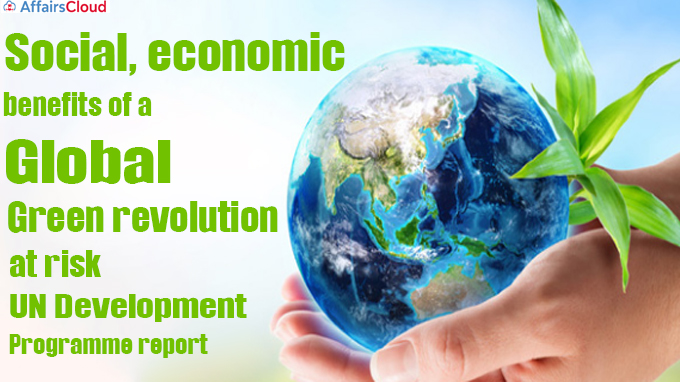
According to the United Nations Development Programme (UNDP) report titled “How Just Transition Can Deliver the Paris Agreement,” nations that fail to recognize the opportunities given by a “green revolution” face increased social inequality, civil unrest, and less competitive economy if suggested net-zero emissions paths are not carried out efficiently.
- The concept of a “just transition” is critical to fulfilling the Paris Agreement’s global climate targets as countries transition to sustainable economies.
The report is released in advance of the UNFCCC (UN Climate Change) Conference of the Parties (COP 27), which will be held in Sharm El-Sheikh, Arab Republic of Egypt, from November 6-18, 2022.
The Report: How Just Transition Can Deliver the Paris Agreement
The report examines both enhanced short-term climate pledges, referred to as “nationally determined contributions” (NDCs), and long-term strategies in which governments explain their plans for net zero emissions.
- It outlines the methods utilized in 5 nations that are leading the ‘just transition’: Antigua & Barbuda, Costa Rica, India, Serbia, and South Africa.
- It also identifies five key ways that a just transition can help deliver the Paris Agreement.
Note:
- Under the Climate Promise, UNDP assists 34 countries in strengthening just transition principles, processes, and practices.
- This support reflects four areas: assessment, engagement, institutional policy & capacity building, and finance.
Key Report Findings:
i.As of October 31, 2022, 170 nations had submitted an upgraded NDC, and 65 (38%) of those countries explicitly include just transition.
ii.The ratio of developed to developing nations is nearly equal (51% vs 49%), with Central and Eastern Europe leading the way, followed by the Americas and the Caribbean, and Africa. Asia-Pacific and Arab countries fall behind.
- However, only 11 countries (17%) have a dedicated chapter or section in their NDC on just transition.
iii.As of October 31, 2022, there were 52 Long-Term Strategies (LTS) filed, of which 29 (56%) explicitly include just transition.
- In this 17 come from nations in Europe and Central Asia, followed by the Asia Pacific and the Americas and the Caribbean. The Arab States and Africa fall behind.
- Despite the fact that long-term plans outperform short-term plans, only 16 countries (55%) have a dedicated chapter or section on just transition in their LTS.
iv.Most countries with improved NDCs that include just transition link it to socioeconomic factors (72%), and/or propose significant just transition initiatives and measures (66%).
v.According to the report, “just transition” is currently mentioned in 38% of the most recent national climate pledges under the Paris Agreement and in 56% of long-term strategies.
Note: The NDC and LTS submitted by the European Union are not included in the report as it only examines contributions from individual countries.
Recent Related News:
In September 2022, Mastercard established a partnership with the UNDP on Mastercard’s Lighthouse MASSIV program, a free startup partnership program that will help to secure the lives of over 1 billion people by 2025. MASSIV stands for Make and Scale Social Impact Vision.
About United Nations Development Programme (UNDP):
UNDP was established by merging the United Nations Expanded Programme of Technical Assistance and the United Nations Special Fund. UNDP, as we know it now, was established in 1966.
Established – 1966
Administrator– Achim Steiner
Headquarters– New York, United States




